Center Piece, Anne Arundel County
From the USS Maryland Silver Service
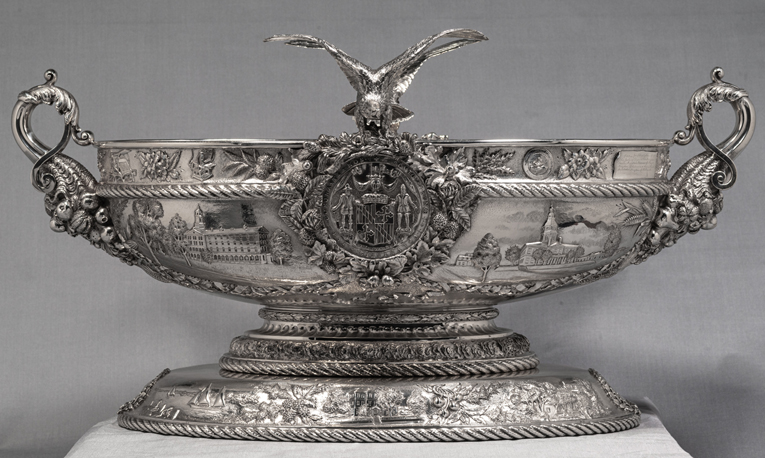
Maker: Samuel Kirk & Sons (1815-1979)
Objects: Centerpiece and Plateau,
Anne Arundel County
Date: 1906
Medium: Sterling Silver
Dimensions: Overall height, 13 1/8"; Overall width,
25 1/2"; Overall depth, 15 3/4"
Accession number: MSA SC 1545-0938-1 (centerpiece); MSA SC
1545-0938-2 (plateau)
The Anne Arundel County centerpiece is one of the most impressive and elaborately decorated pieces in the silver service. This exceptionally detailed piece is supported by a plateau, and two large eagles with outspread wings sit with their talons gripping the rim above the Great Seal and the Cruiser Maryland. The centerpiece was later fitted with a flower grate, also made by Kirk, to accommodate floral displays; the flower grate is not displayed in this exhibition. Anne Arundel County was created in 1650, and was named for Lady Anne Arundell (1615-1649), the wife of Cecilius Calvert, Second Lord Baltimore.
The centerpiece is decorated with four principal scenes,
each separated by tobacco leaves, and an additional eight
small scenes, separated by local flowers, form the border of
progress and innovation along the top. The Great Seal and
USS Maryland Cruiser are surrounded by a wreath
composed of oak, horse chestnut and mulberry leaves.
Inverted cornucopias filled with fruits, vegetables and
grains form the handlers, while a border of oyster shells
forms the base of the centerpiece. The plateau contains an
additional eight historical scenes. A rope border forms the
bases of the centerpiece and plateau.
Centerpiece:

Maker: Samuel Kirk & Sons (1815-1979)
Objects: Centerpiece, Anne Arundel County
Date: 1906
Medium: Sterling Silver
Dimensions: Centerpiece: Overall height 11 1/2"; Overall width, 25"; Overall depth (eagle to eagle) 15 1/2"
Accession number: MSA SC 1545-0938-1
Scenes around the upper portion (left to right):
-
First Type Revolving Press (number 28)
Depicted on the front border of the centerpiece is an image of a revolving printing press. R. Hoe & Company of New York developed a revolving printing press in 1845-46 that helped to revolutionize the newspaper industry. The Baltimore Sun purchased one of these machines when it moved into their new headquarters at the Sun Iron Building in 1851.
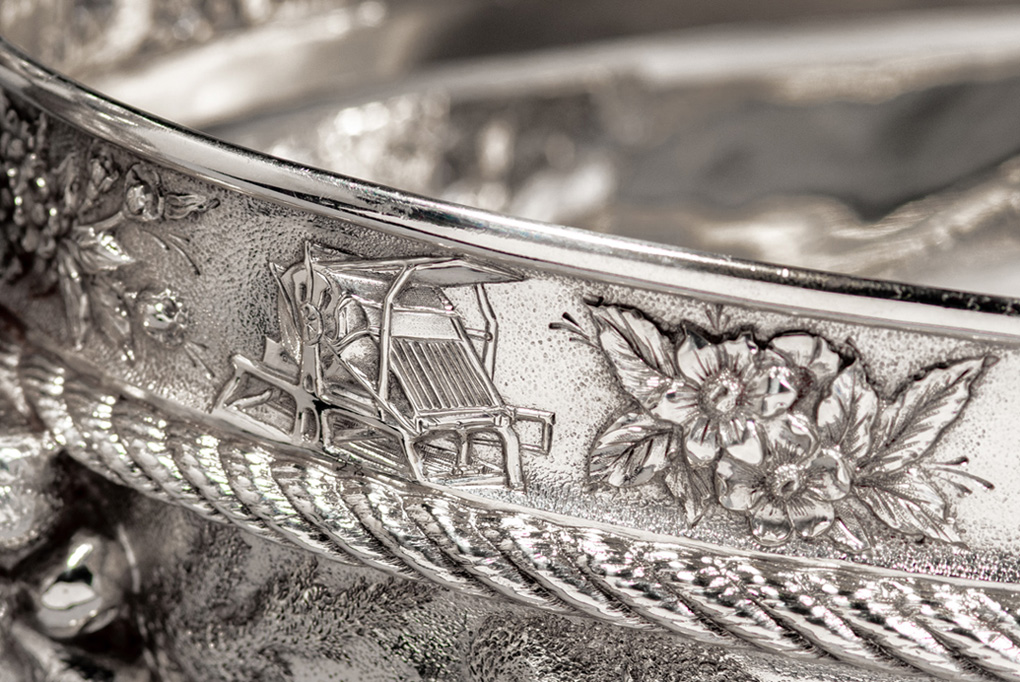
First Type Revolving Press -
First Linotype Machine (number 29)
The linotype machine was invented in Baltimore by German immigrant Ottmar Mergenthaler in 1886. The linotype machine drastically improved printing production for newspapers and publishers in the 19th century. Prior to its invention, all typesetting was done by hand, which was a long, labor intensive and very costly process that limited the number of pages a daily newspaper could print.
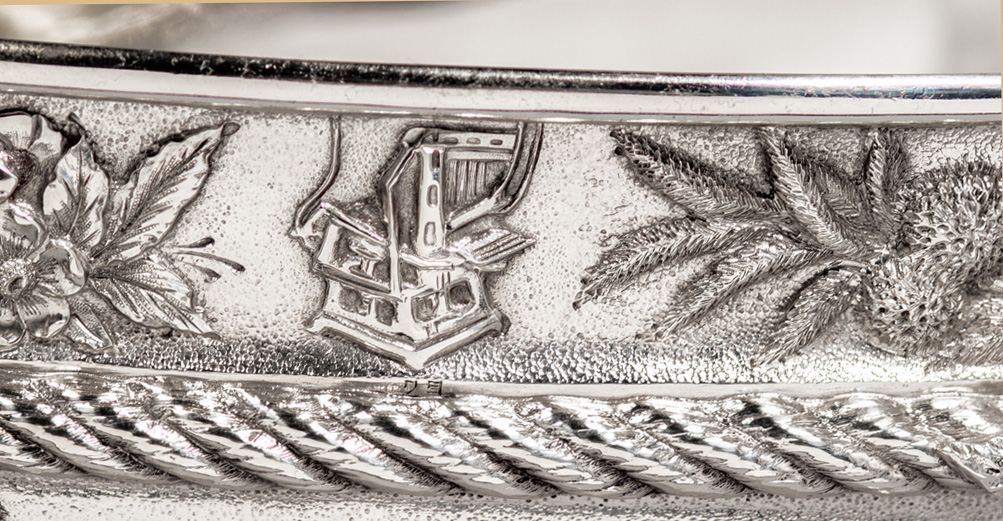
First Linotype Machine -
Seal of the First Dental College (number 22)
The first dental college, the Baltimore College of Dental Surgery, opened in 1840. Due to its national importance, it was included in the Anne Arundel County centerpiece rather than the Baltimore City and County punchbowl.
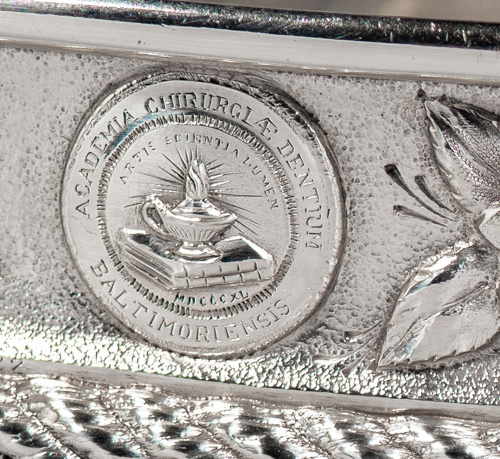
Seal of the First Dental College -
First Petition for Naturalization (number 23)
The first person to petition for citizenship in colonial Maryland was Augustine Herrman, who was born in Prague, a city in the Kingdom of Bohemia (today the Czech Republic).
He first came to Maryland in 1659 as an ambassador from New Amsterdam to help settle border disputes between the Dutch settlements and Maryland along the Delaware Bay. In 1660, Herman returned to Maryland and proposed to Cecil Calvert, Lord Baltimore, that he would draw an accurate map of the colony in exchange for ownership of land on the Eastern Shore, now in Cecil County.
Calvert granted Herman 5,000 acres of land and declared Herman a denizen, which gave him limited citizen rights. In 1663, Herman petitioned the Maryland Assembly for full citizenship rights to be granted to him and his family. The inscription on the scroll reads, "Petition of John Jarbo, of Dijon, in the Kingdom of Bohemia; Ephriam, Georgus, and Casparus, Sons of the said Augustine; Anna, Margaritta, Judith, and Francina, his daughters; Anna Hack, George and Peter, her sons.”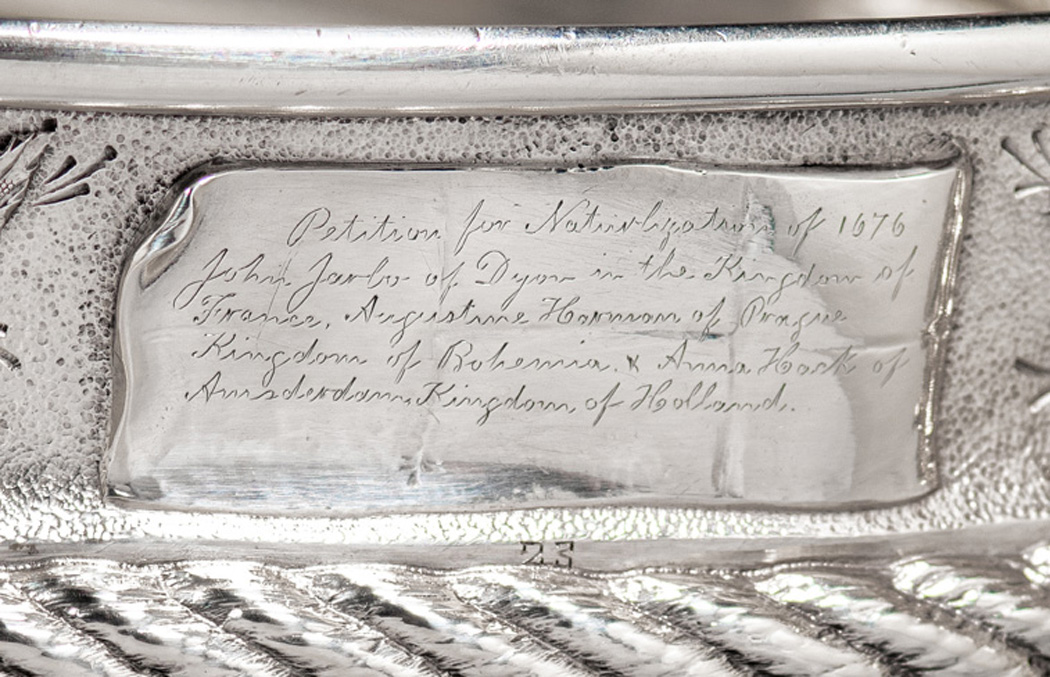
First Petition for Naturalization
-
Old Cadet Quarters, United States Naval Academy (number
20)
The cadet quarters depicted on the centerpiece were constructed in 1869 and stood on the Naval Academy grounds for 36 years. They were torn down after the construction of Bancroft Hall in 1905.
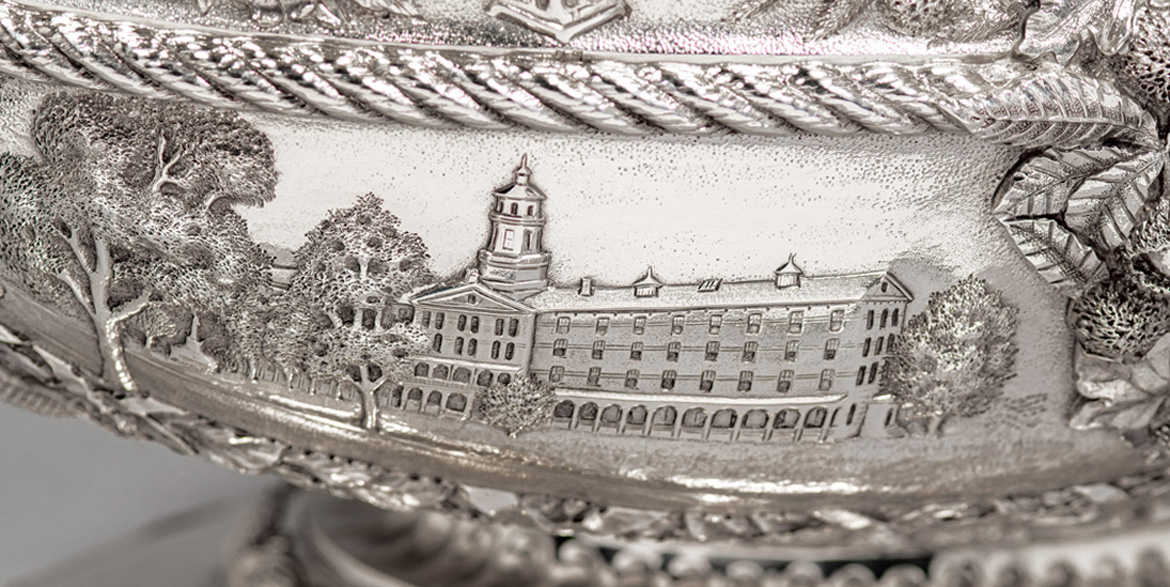
Old Cadet Quarters, United States Naval Academy - Great Seal of Maryland
-
Maryland State House (number 21)
The original portion of the Maryland State House is shown on the centerpiece for Anne Arundel County and was constructed between 1772-1779. It is the oldest state house in the nation in continuous legislative use. The Continental Congress met in the Old Senate Chamber from November 26, 1783 to August 13, 1784.
During that time, George Washington came before Congress to resign his commission as commander-in-chief of the Continental Army and the Treaty of Paris was ratified, marking the official end of the Revolutionary War.
On May 7, 1784, the Chamber was the scene of Thomas Jefferson's appointment as minister plenipotentiary to join Benjamin Franklin and John Adams in Paris to negotiate commercial treaties with European governments.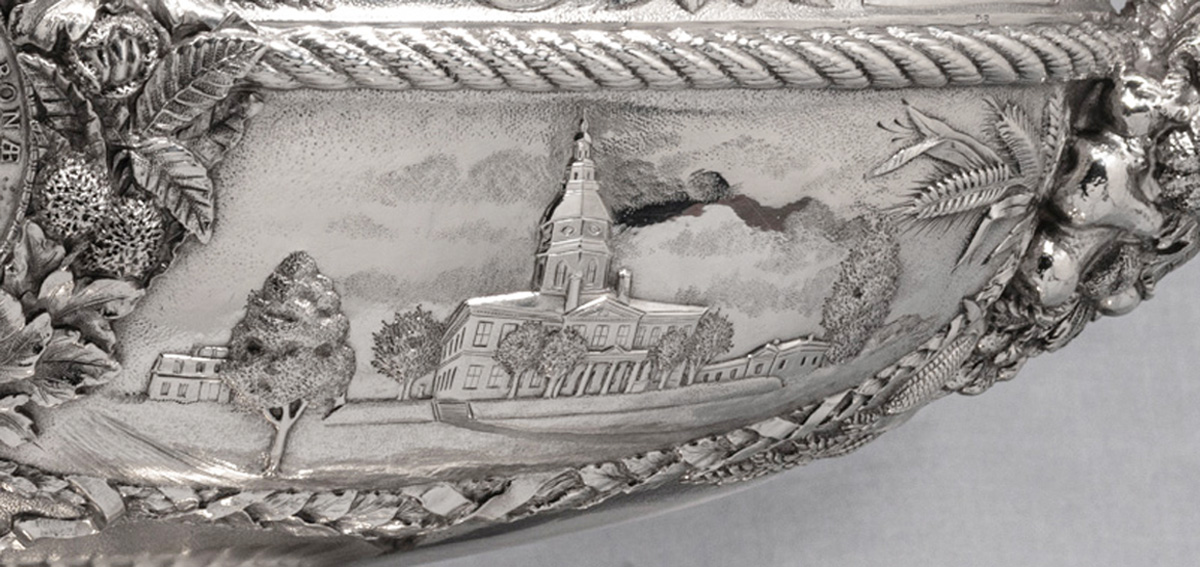
Maryland State House
-
The “Maryland Gazette”, May 24, 1745 (number 24)
The Maryland Gazette was the first newspaper in Maryland, published by William Parks, the printer of the province. The first issue was published on Sept. 19, 1727 and ceased on November 29, 1734.
The "Gazette" was reissued again in January of 1745 by Jonas Green. It reached new heights of popularity during this period as a result of the pre-revolutionary discourse that was published. Perhaps one the most famous issues of the Maryland Gazette was Jonas Green’s protest of the hated Stamp Act, which was passed by the British Parliament on March 22, 1765 and was the first direct tax on the American colonists. Green protested the tax by publishing the death's head stamp in place of the required stamps on the paper. The scroll on the centerpiece, is engraved The Maryland Gazette, May 24, 1745
While Jonas Green died in 1767, his wife Anne Catharine Hoof Green and their descendants continued to publish the paper until 1839.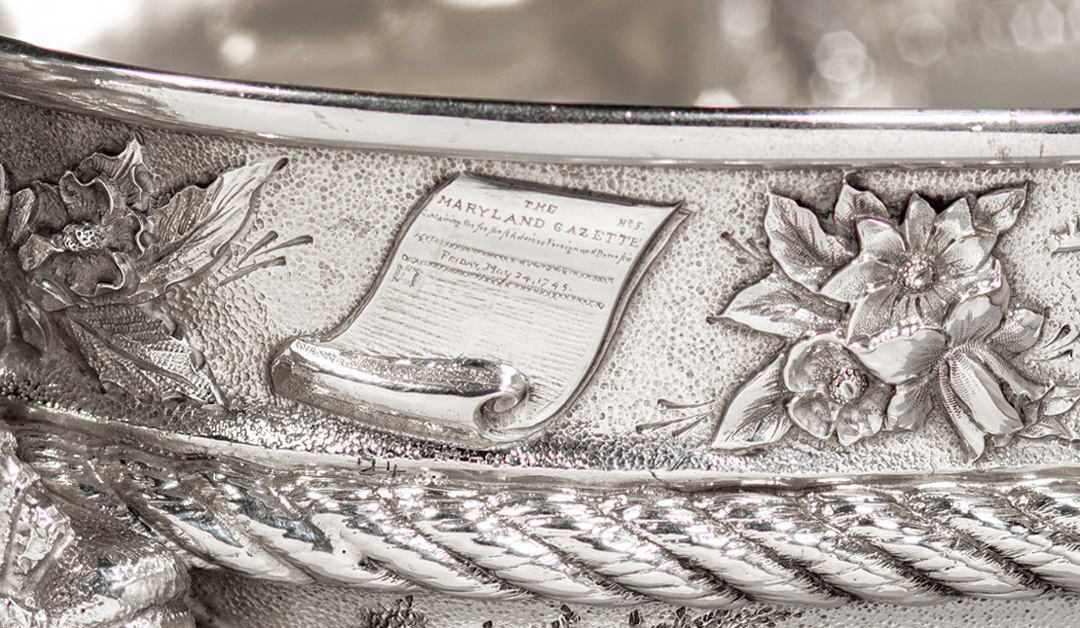
The Maryland Gazette, May 24, 1745 -
First Theater in Maryland (number 25)
The masks of Comedy and Tragedy, as well as a mandolin, are symbolic of the first theater built in Maryland, in 1752.
Estimated to hold about 500 people, it was also one of America’s first theaters. Locally called the “New Theater” the first performance was Gay-Pepusch's Beggar's Opera.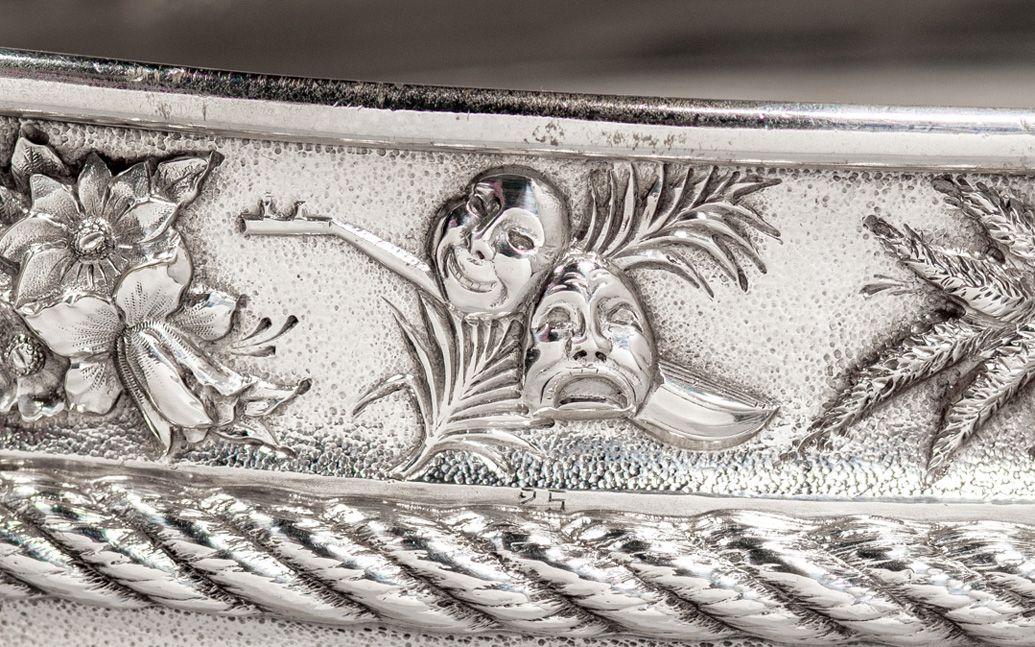
First Theater in Maryland -
The Sun Iron Building [Baltimore] (number 26)
The Sun Iron Building was the world's first building that had its framing made entirely out of cast iron and was located at the Southeast corner of Baltimore and South Streets in Baltimore. It was constructed in 1850-51 by the founder and publisher of The Baltimore Sun, A.S. Abell. The building burned down during the Great Baltimore Fire of 1904.
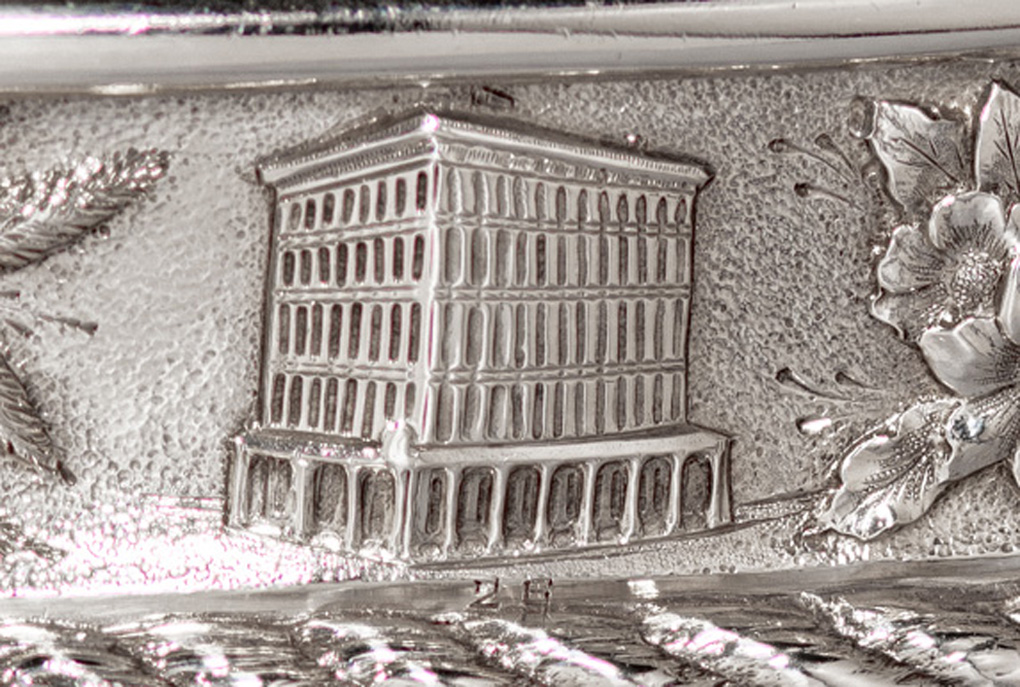
The Sun Iron Building -
First Passenger Railroad Coach, Baltimore & Ohio
Railroad (number 27)
The initial trains of the Baltimore and Ohio Railroad company were pulled by horses. An image of the horse drawn “Pioneer” passenger coach of the B&O Railroad is depicted on the reverse border of the centerpiece. A total of 30 passengers were able to sit on one of two long benches.
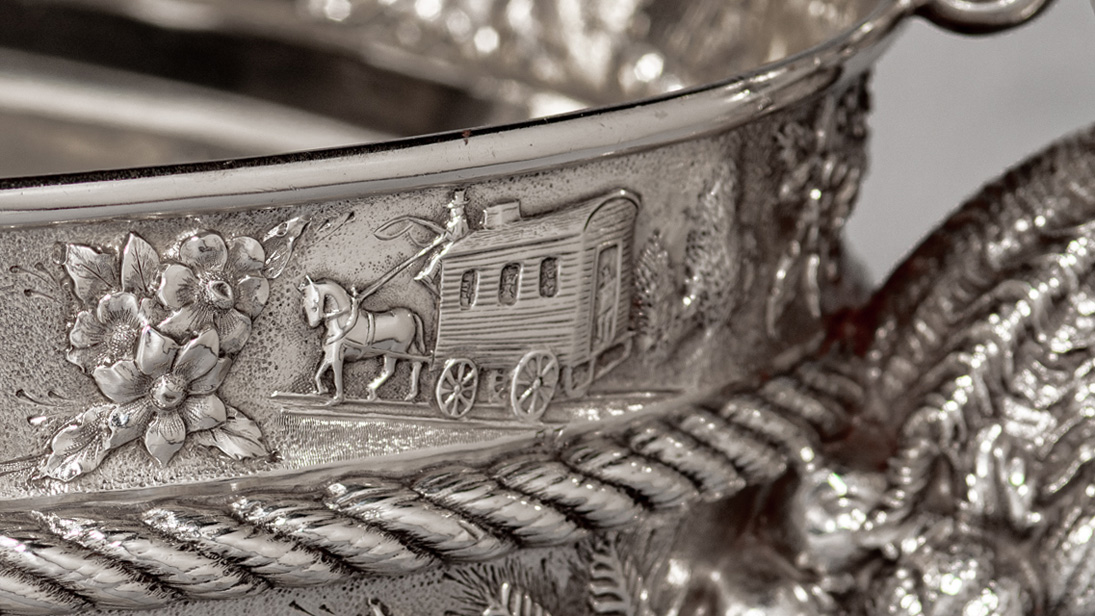
First Passenger Railroad Coach, Baltimore & Ohio Railroad
-
Battle of Horn Point, 1655 (number 18)
The Battle of the Severn took place on March 25, 1655 on the Severn River outside Annapolis during the English Civil War (1642-55). It was fought between Roman Catholic forces who supported King Charles I and the Calvert Family and the Protestant forces who supported the Commissioners of Parliament and Oliver Cromwell.
The Catholic forces of Governor William Stone were soundly defeated by the Puritan troops led by Captain William Fuller. The Puritans maintained power until 1658 when the proprietorship of the colony was restored to the Calvert family.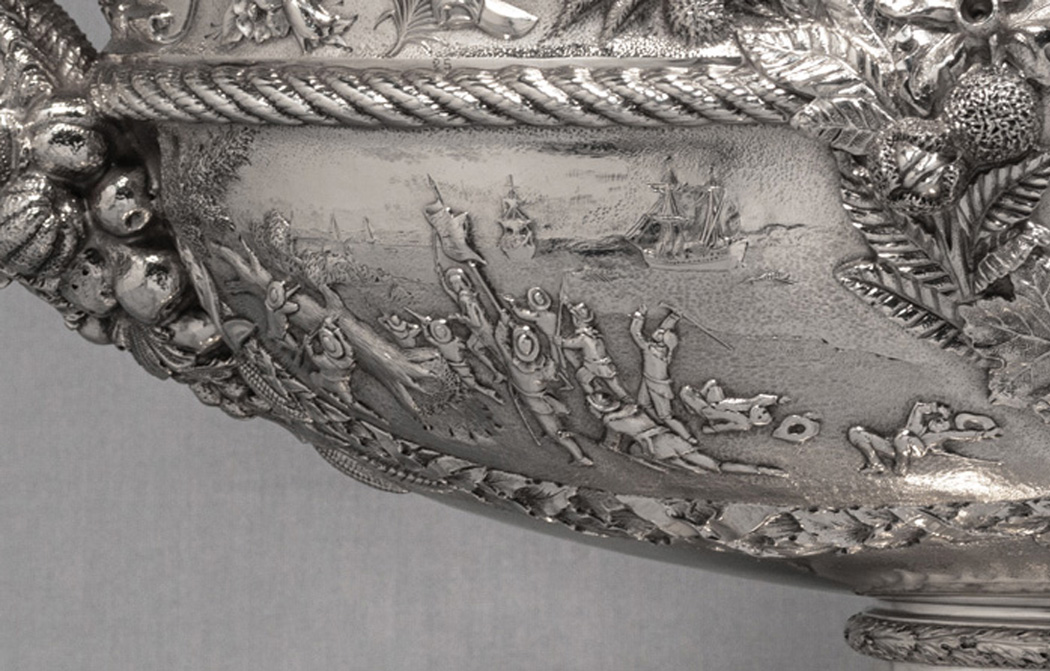
Battle of Horn Point, 1655
- USS Maryland Cruiser
-
The Burning of the Peggy Stewart (number 19)
This historic scene depicts the burning of the brigantine Peggy Stewart on October 19, 1774, when Annapolis experienced its own “tea party,” reminiscent of the uprising that occurred the year before in Boston Harbor.
When the ship arrived at the port of Annapolis on Friday, October 14, laden with a cargo of tea, its contents were subject to a highly controversial tax imposed by Britain on goods imported to America. When the owner of the Peggy Stewart, Anthony Stewart, paid the “tea tax,” he violated the non-importation resolution implemented by the colonists in protest.
By Wednesday, October 19, a crowd had gathered in Annapolis threatening Stewart’s life if he did not destroy the ship and its cargo. Unwilling to accept Stewart’s offer to destroy the tea, the crowd demanded that the vessel be burned. Fearing the mob might attack his home where his wife lay ill, Stewart gave into their demands.
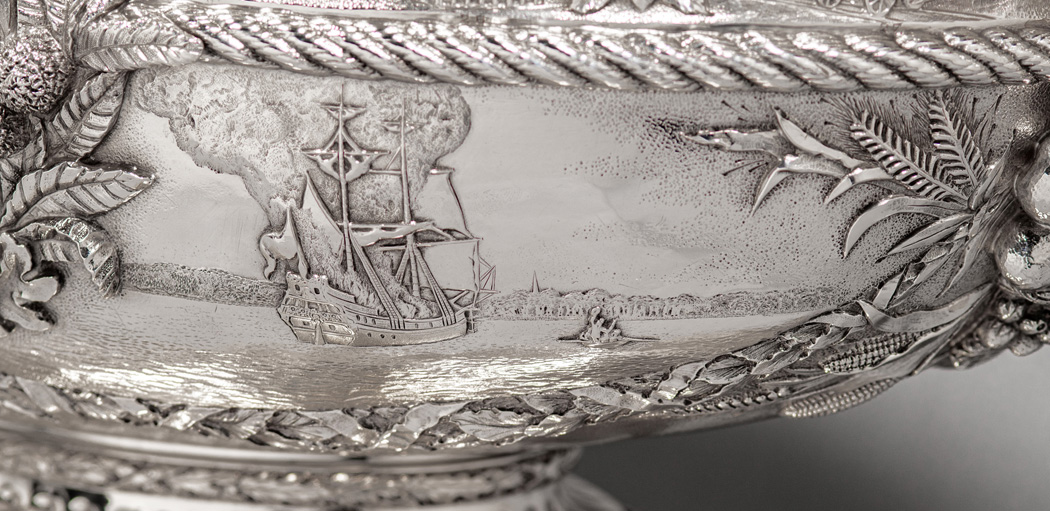
The Burning of the Peggy Stewart
Plateau:

Maker: Samuel Kirk & Sons (1815-1979)
Objects: Centerpiece and Plateau, Anne Arundel County
Date: 1906
Medium: Sterling Silver
Dimensions: Plateau, Overall height 2 3/16"; Overall width, 18 1/4"; Overall depth 10”
Accession number: MSA SC 1545-0938-2
Plateau Scenes (left to right):
-
John Hanson (number 31)
John Hanson was a prominent figure in colonial America and had a very distinguished public service career serving Maryland and the nation. He represented Charles County in the Lower House of the Maryland Colonial Assembly from 1757-63,1765-66 and 1768-69. He was a delegate to the Continental Congress, 1780-82, and a signer of the Articles of Confederation in 1781. Some people believe that he should be considered the first president of the United States rather than George Washington, as he was elected president of the Continental Congress, 1781-82.
Hanson died November 15, 1783 in Oxon Hill, in Prince George’s County, at the home of his nephew, Thomas Hanson.
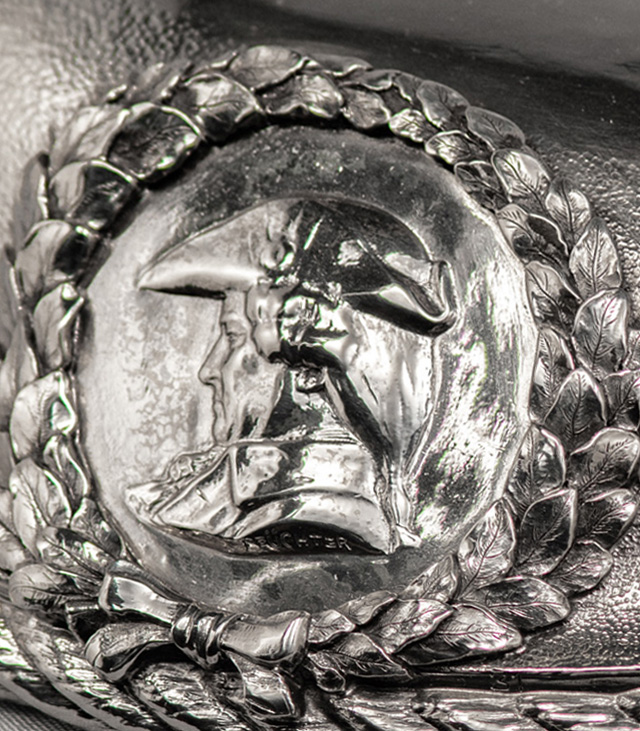
John Hanson -
Typical Maritime Scene on the Chesapeake Bay (number 34)
The Chesapeake Bay and its many tributaries are synonymous with Maryland. It has always played an important role in the economic, industrial, and recreational lives of Marylanders.
This scene on the plateau of the centerpiece shows a bugeye sailboat full of crabs and two men fishing on a dock.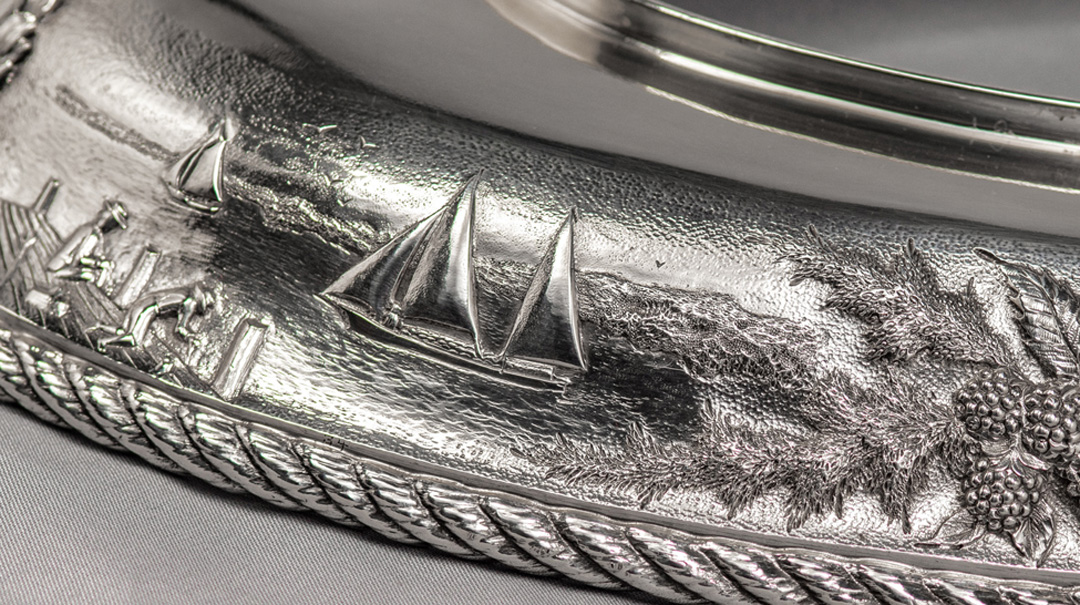
Maritime Scene on the Chesapeake Bay -
Chase-Lloyd House (number 33)
The three-story brick Georgian mansion, now known as the Chase-Lloyd House, was built between 1769-74 by William Buckland. It is considered one of the finest examples of a Georgian-style mansion and was designated a National Historic Landmark in 1970.
The current name of the house derives from the first two owners of the property. Samuel Chase, one of the four Maryland signers of the Declaration of Independence and Supreme Court Justice. Chase began construction on the grandiose home but within two years, ran out of money and was forced to sell it before it was completed. Edward Lloyd IV, a wealthy plantation owner bought the home in 1771 and completed it.
A later occupant donated the home in 1886 and established a trust for the purpose of providing housing for women suffering the " vicissitudes of life". For more than 130 years, the Chase home was a boarding house for women.
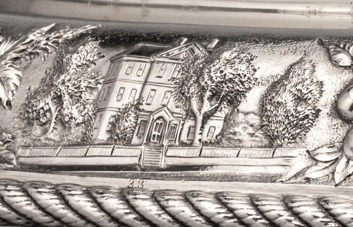
Chase-Lloyd House -
Dorsey House
(number 37)
When the state capital moved from St. Mary’s City to Annapois in 1694, the first Provincial Assembly was held at Major Edward Dorsey’s house, which was one of three extant brick houses in the city at the time. It was also the first “Governor’s Mansion” when Royal Governor Sir Francis Nicholson lived there from 1694-1709.
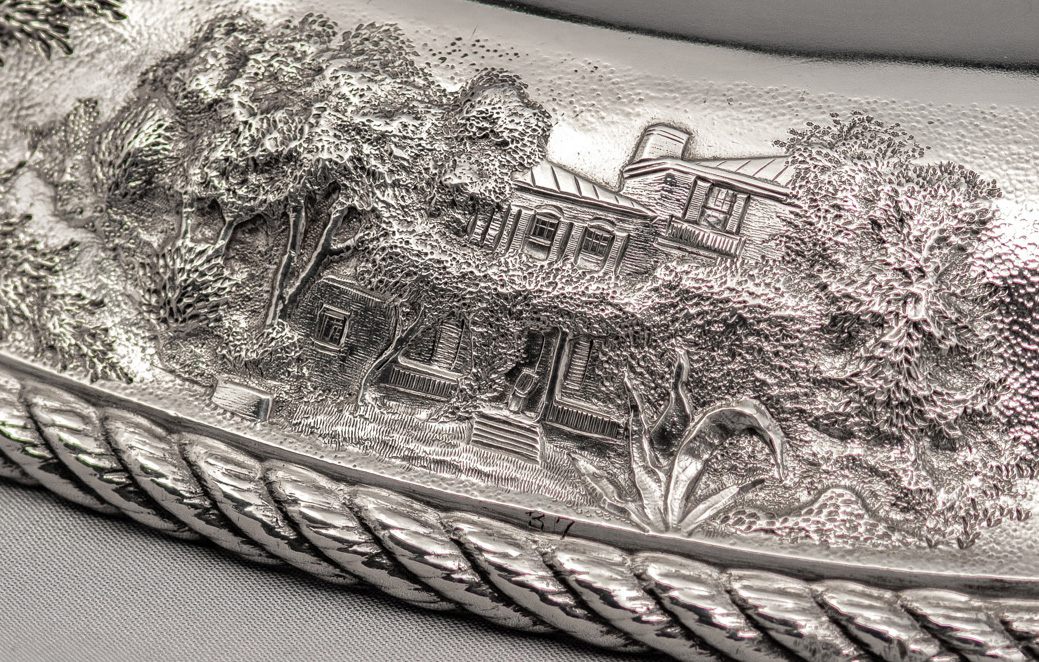
Dorsey House -
Charles Carroll of Carrollton (number 30)
Charles Carroll of Carrollton was born in Annapolis in 1737. He received a formal education in Europe and studied law in France and England. When Carroll returned to Annapolis in 1764 he was not allowed to practice law or hold public office due to restrictions on the rights of Roman Catholics.
In 1774, Carroll gained distinction by adopting the name "First Citizen" in a series of political debates published in the Maryland Gazette that focused on the nature of government and the rights of private citizens.
Carroll was the only Roman Catholic signer of the Declaration of Independence and, on his death in 1832, was the last surviving signer. He served in the Maryland Senate from 1777-1800, and was its president on the day of George Washington’s resignation.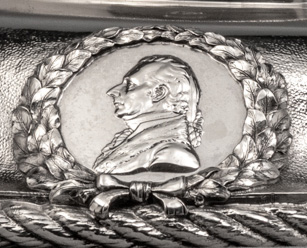
Charles Carroll of Carrollton
-
Oyster Tonging on the Severn River (number 35)
Oysters have always been one of Maryland’s most important natural resources and harvesting them has also been one of Maryland’s most valuable industries.
This scene depicted is located near the mouth of the Severn River and shows an oyster fleet tonging for oysters.
Marylanders have been tonging for oysters since the 1700s. Gathering oysters by long tongs is done from the side(s) of a small boat or cannone and is done in shallow waterways.
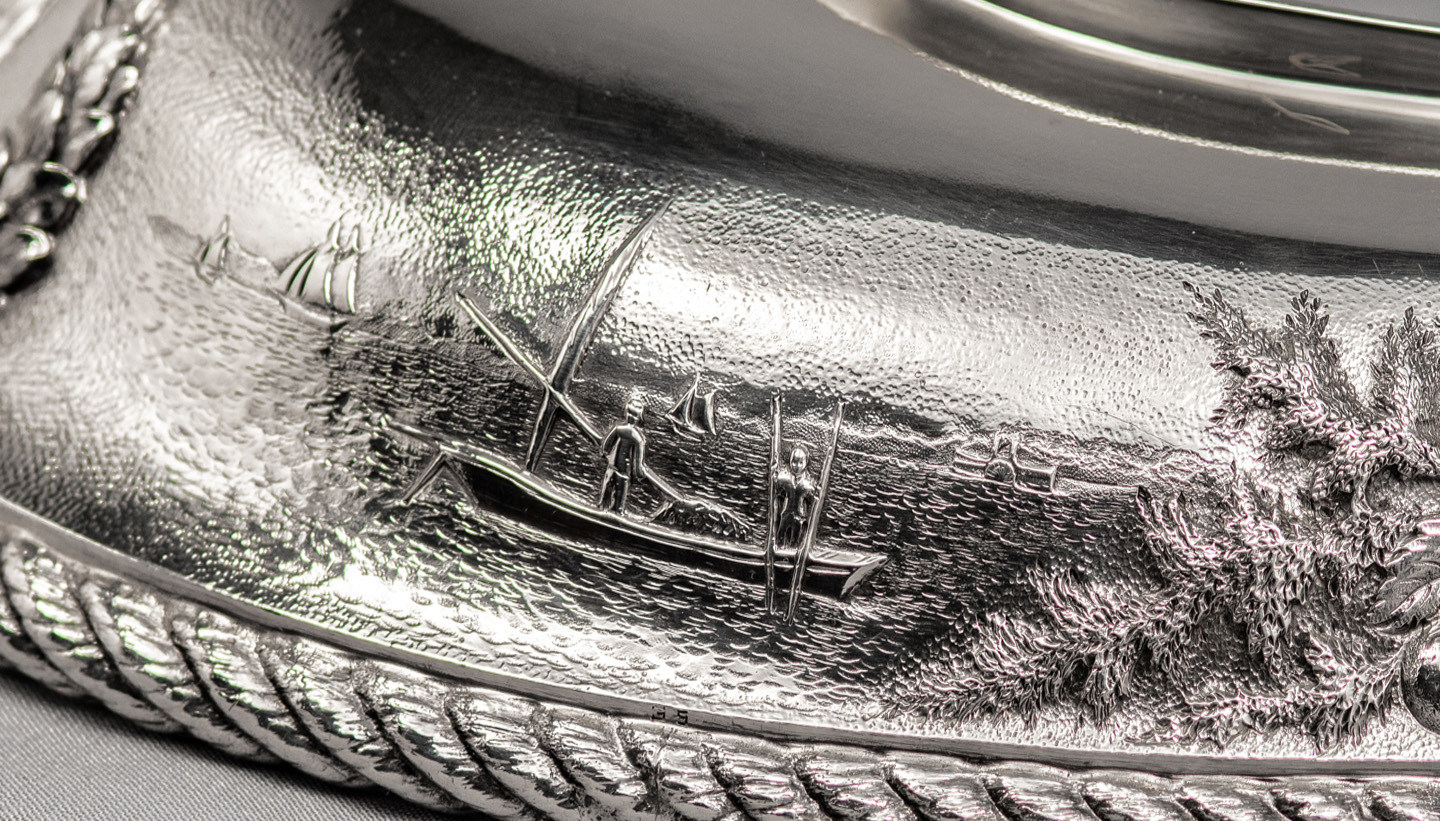
Oyster Tonging on the Severn River -
Peggy Stewart House
(number 32)
The Peggy Stewart House in Annapolis is named after the brigantine ship owned by Anthony Stewart, the house's owner, that sparked Revolutionary fervor in Annapolis. Anthony Stewart was forced to either burn his house or burn his ship because he paid the highly controversial tax imposed by Britain on goods imported to America. That scene is also shown on the centerpiece.
This historic house was built between 1761-64 by Thomas Rutland and was designated a National Historic Landmark in 1973, because of its association with Anthony Stewart and two other owners: Daniel St. Thomas Jennifer, first Senate president of Maryland and Thomas Stone, one of Maryland’s four signers of the Declaration of Independence.
Peggy Stewart House -
The Old Treasury Building (number 36)
The Old Treasury Building on State Circle was built in 1735-36 as a treasury for the Commissioners for Emitting Bills of Credit. It is the oldest public building in Annapolis and is currently undergoing extensive historic preservation and archeological investigations.
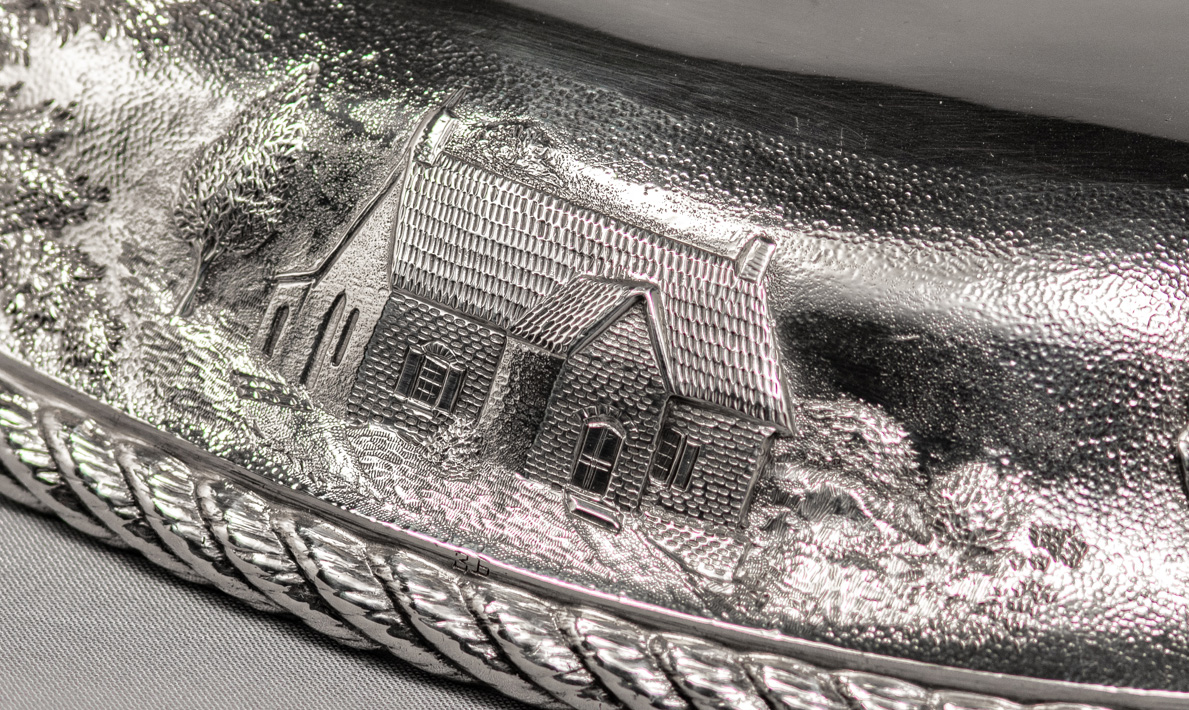
The Old Treasury Building
|
This web site is presented for reference purposes under the doctrine of fair use. When this material is used, in whole or in part, proper citation and credit must be attributed to the Maryland State Archives. PLEASE NOTE: The site may contain material from other sources which may be under copyright. Rights assessment, and full originating source citation, is the responsibility of the user. |
© Copyright August 06, 2024 Maryland State Archives
